2024 Jeep Grand Cherokee
| The Good: – Handsome styling – Cabin space and features – Comfort and offroad ability |
The Bad: – Average acceleration – Crossovers handle better – Premium price with options |
The Jeep Grand Cherokee was born 30 years ago as the brand’s attempt to move upmarket. While the first three generations were very capable and quite popular SUVs (we owned a second-gen one), they were nowhere near premium when compared to the Europeans. That started to change when the fourth generation debuted, riding on a modified Mercedes-Benz platform from the time when the Germans owned the American carmaker. While it still wasn’t a true luxury vehicle, the latest all-new model for 2024 makes a much stronger go at becoming a premium midsize contender.
The previous iteration of the Grand Cherokee ran for 13 years with just minor facelifts, which is a testament to how it got several things right, so it’s a tough act to follow. Interestingly, Jeep chose to launch a longer-wheelbase three-row Grand Cherokee L model first before bringing back the original 5-seater format.
Slightly larger than the older model, it remains a handsome SUV without resorting to the boxy look that’s on trend nowadays. The front end is more upright, while the roof has a “separated” look to enhance the optionally available two-tone paintjobs. The rear has thin wraparound tail lights with real exhaust outlets integrated into the rear bumper. Discrete aluminium side steps and roof rails along with 20-inch alloy wheels finish off the styling on our Overland version.
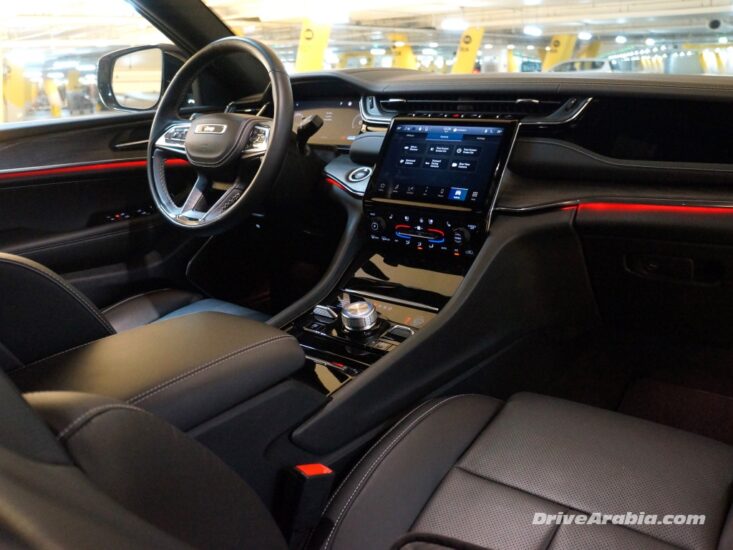
The Overland’s cabin boasts a fairly straightforward cabin design, with nicely padded leatherette surfaces and beefy Nappa leather-upholstered seats. The three well-integrated screens (including one on the passenger side) don’t overwhelm the dashboard with iPad-like stick-ons as seen in other modern cars, and there is a full set of physical buttons and knobs for important functions, which is the sensible thing to do. The all-black interior is a bit stark though, and we’d have picked a lighter interior option.
The Grand Cherokee’s step-in height can be a bit of a stretch for shorter passengers, even with the optional air suspension lowered. Cabin space is as good as can be in this segment, with generous rear legroom and overall headroom. The front seats are moderately bolstered while the rear bench can recline and split-fold. The usual layout of cup-holders, door pockets, cubbies and seatback pockets are there, including a covered space ahead of the gear selector for the wireless charging pad, but there are no packaging surprises.
The boot is of a good size, with 1067 litres of volume behind the back seats, and 2005 litres with the second row folded down. However, that’s less space than crossover-based three-row rivals. If five seats and the boot space aren’t enough, the longer three-row Grand Cherokee L exists on the same showroom floor.
The Overland is loaded with tech, with a 10.25-inch LCD gauge cluster, a 10.1-inch central touchscreen with GPS, and a 10.25-inch screen that the front passenger that can watch TV on or set the navigation for the driver. Wireless Apple Carplay and Android Auto, standard 9-speaker audio system with subwoofer, wifi hotspot capability, two USB ports each front and back, aux audio input jack, two 12-volt aux outlets and a 115-volt auxiliary power outlet complete the infotainment options.
Available features include 12-way power-adjustable and ventilated front seats, hands-free power rear liftgate, dual-pane panoramic glass roof, interior ambient lighting, Full LED lighting with automatic high-beam, smart key with remote start, rain-sensing windshield wipers, wireless phone charger, power-adjustable steering column, digital rearview mirror, second-row sun shades, 360-degree exterior camera system, offroad camera, front and rear parking sensors, 8 airbags, and a four-zone automatic a/c (with rear digital controls and vents) that cools the car eventually but doesn’t blow air as hard as we expected in its maximum setting.
The full suite of active safety nannies includes rain-brake support, pedestrian emergency braking, full-speed forward collision warning, adaptive cruise control with stop-and-go feature, blind-spot and rear cross-traffic alerts, and even something called intersection collision assist.
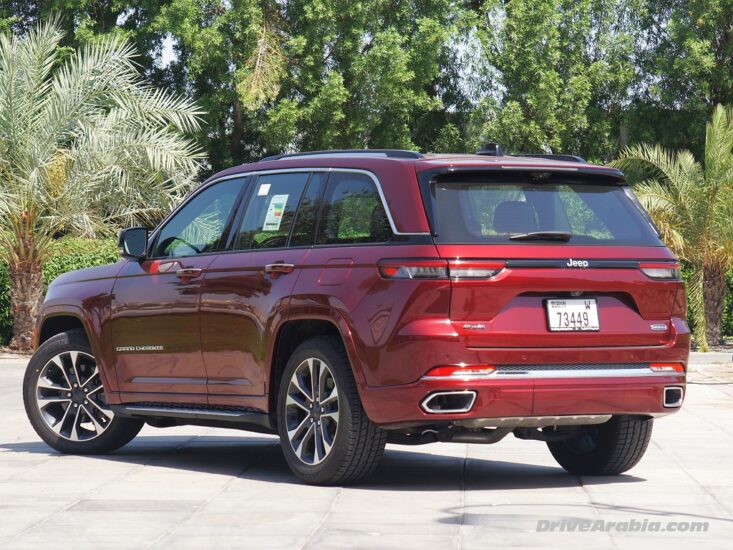
Our Grand Cherokee is powered by a 3.6-litre V6, which dates back to 2010 but has been mildly tweaked over the years. Now making 293 hp at 6400 rpm and 348 Nm of torque at 4000 rpm, the old-school engine is mated to an 8-speed automatic and all-wheel-drive. Weighing in at 2141 kg, it’s actually on the lighter end of vehicle heft nowadays, but the as-tested 0-100 kph time of 8.5 seconds is still middling at best. The old 5.7-litre V8 option has been dropped, and hasn’t been available at most GCC dealers for a long time anyway.
But surprisingly, the gearing is so tight that it jumps off the line quite fast in around-town driving, to the point where we thought there was some kind of electric boost. The gearbox works smoothly enough, and this Jeep’s smaller overall size makes it easier to slip into tighter spaces than its three-row brethren. Front visibility is slightly hindered by its somewhat thick front A-pillars, but the 360-degree cameras and sensors make parking a breeze. Fuel economy is decent, at an as-tested 13 litres/100 km (7.7 km/litre).
The Grand Cherokee has tried to balance the fine line between maintaining its offroad cred while being as capable a road car as possible, and the new model refines that formula further. The Overland model comes with Jeep’s Quadra Lift Air Suspension system with adaptive damping, so it rides comfortably on-road and soaks up the bumps.
And while the handling won’t stand up to a flat-out drive on some twisty roads like some of its crossover-based rivals, it isn’t bad at all. There is some body roll and there is the slightest bit of lumpiness, but it’s not even close to making it feel unstable on the road.
All of its annoyances are minor. It’s fairly silent at 100 kph, but road and wind noise become prominent as you hit 120 kph and beyond. The steering is a bit heavier than you’d like for a premium-priced SUV, but otherwise accurate. And the limits of grip from the 265/50 tyres are reached easily, but handled safely, aided by strong brakes.
Of course, the Overland also comes with the Quadra-Trac II 4WD system, and the adjustable air suspension will give its an instant lift, making it a very capable midsize SUV offroad. It comes with low-range gearing, front-axle disconnect, two front tow hooks and a 4×4 Selec-Terrain system to set up the car based on surface conditions. On the soft stuff, it glides around very easily as long as you control the throttle correctly, and it will even manage tough angles thanks to the increased ground clearance at the pull of a switch, as high as 10.9 inches (277 mm), up from the standard 8.4 inches (213 mm). For context, it can rise much higher than the new Toyota Land Cruiser Prado, but not as high as the Land Rover Defender 110 at its highest setting. The aristocratic Jeep’s bumpers are on the delicate side though, so we’d watch those approach/departure angles like a hawk if we were to go around chasing Wranglers.
The Jeep Grand Cherokee has moved upmarket in its latest iteration, with prices that overlap heavily with Defender. Then again, the Prado is also playing in the same pricing ballpark now, so there isn’t any other options left if you’re looking for a luxury-minded midsize SUV that can tackle a bit of serious offroading. The Jeep has far more modern electronic tricks on its options sheet though, so it remains an important player in this small but tightly contested niche.
Photos by Mashfique Hussain Chowdhury.
| Price Range: Dh 207,000-310,000 Current Model Introduced in: Body Styles: Engines: Transmissions: Setup: Suspension: |
Brakes: Front: discs Rear: discs Curb Weight: Length: Wheelbase: Top Speed: Test Acceleration 0-100 kph: Observed Test Fuel Economy: |

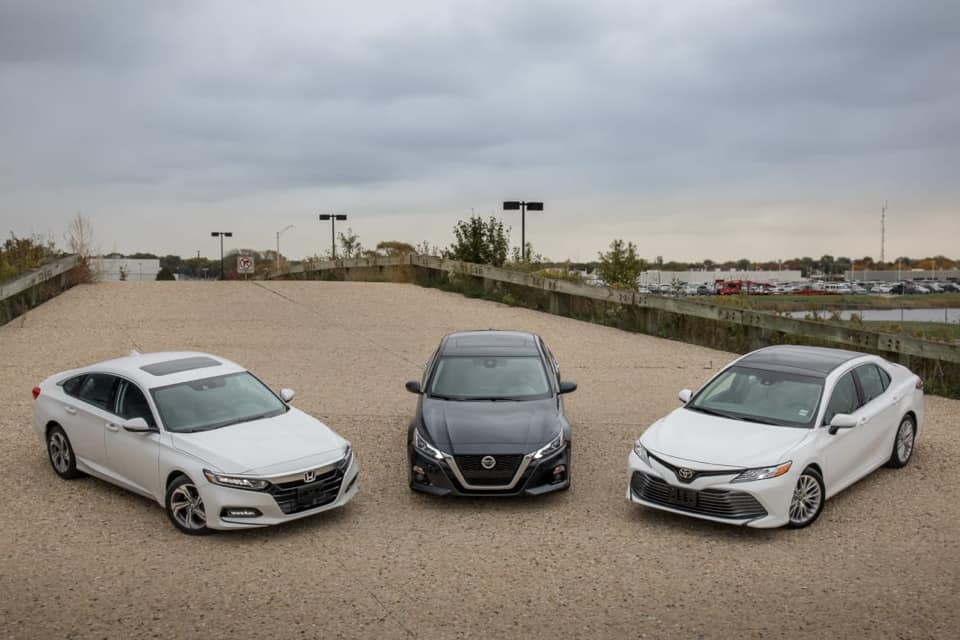
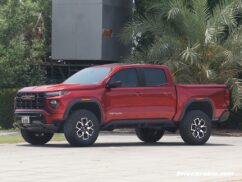

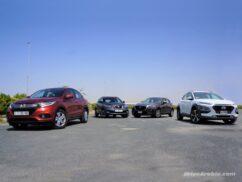

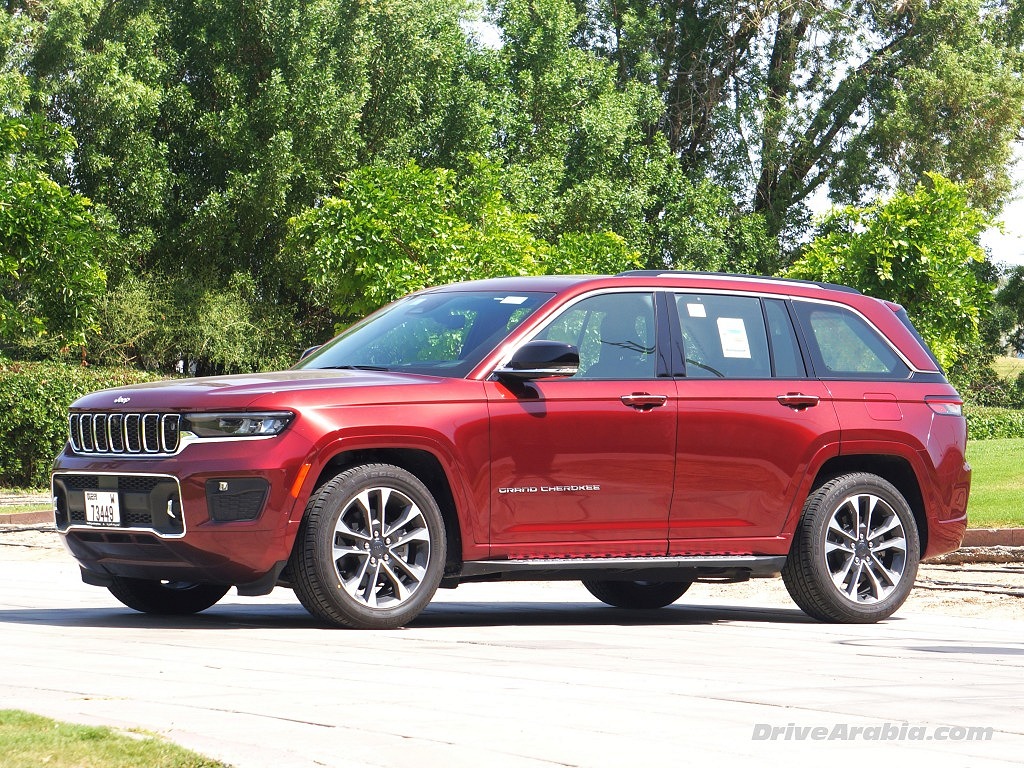









There are no comments. Be the first!